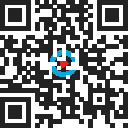CASE STUDY
Integrity Networks Alaska Branch
Download PDF

At a Glance
Customer: Integrity Networks Alaska Branch
Industry: Technology Company
Location: United States
Website: www.integritynetworksinc.com
Company Background
Integrity Networks provides communications services and cable and fiber network infrastructure installation for companies and federal, state and local governments nationwide and around the Pacific Rim. Based in Renton, Washington, their projects range from military bases in Guam and Singapore, data center and VOIP installations in Washington and Virginia, to major healthcare and corporate oil, gas and mining projects across Alaska.
Integrity Networks entered the Alaskan market in 2007, and it has remained a steady presence in low-voltage contracting there ever since. With branch headquarters in Anchorage, Integrity Networks has an extensive staff of highly skilled Alaskan employees that work on jobs in the last great American frontier.
Product:
On This Page
The Risks of Working on the North Slope of Alaska
Working on Alaska’s North Slope requires a fundamental understanding about the environment; something Alaskans understand like no one else. The first thing to understand is that the North Slope is in the bush, the untamed part of Alaska where wildlife don’t respect project boundaries. Moose wander wherever they choose. Brown bears and polar bears top the food chain, and all are high on the human-wildlife “conflict” scale. Then there are the biting insects, which are plentiful and notorious. While they may not kill you - you may wish you were dead.
The weather is another environmental consideration for workers in Alaska. During nine months of the year, it’s basically winter in this part of the state. Freezing cold, snow, and blizzards – a variety of hazards that start piling up as many Integrity Network projects get underway on the North Slope.
“Walking between buildings on a job can be dangerous. While it hasn’t happened, when it’s winter and you’re walking around a project on the North Slope, in the back of your mind you know that there could be a polar bear in your path,” said Randy Sherman, Alaska Area Manager for Integrity Networks.
“Walking between buildings on a job can be dangerous. While it hasn’t happened, when it’s winter and you’re walking around a project on the North Slope, in the back of your mind you know that there could be a polar bear in your path,”
Randy Sherman, Alaska Area Manager for Integrity Networks.
The Challenge: Testing 1400 Fiber Links Bi-Directionally
One significant job for an energy company on the North Slope required Integrity Networks technicians to test more than 1,400 fiber links bi-directionally. The task was further complicated by the winter weather.
Bi-directional testing requires testing the fiber links from both ends of the fiber. For most installers and contractors, this means walking to the other end for each link to be tested. Shortcuts, such as testing all the links from one end and then the other yields inaccurate results that aren’t standards compliant. In most jobs, walking back and forth for each test would increase the testing time unacceptably. For this particular job, given the cold temperatures, it was daunting just to think about gearing up to go between buildings that were several hundred yards apart to get to the far end.
“As Alaskans, we have a healthy respect for the weather and the wildlife,” Sherman shared. “In the middle of winter if you get caught outside long enough, it could be disastrous.”
Benefits of SmartLoop – Time Savings Easily Paid for Cost of Tester on First job
Thanks to OptiFiber® Pro with SmartLoop™, the Integrity Networks technicians were able to do the testing in nearly half the time it took on similar jobs. Not once during the job did a technician have to risk walking the OTDR to the far end to test the links bi-directionally, minimizing the amount of exposure to the elements and reducing potential conflicts with wildlife.
The SmartLoop algorithm calculates the average bi-directional loss for each event and displays each fiber with a simple pass or fail indication. There is no requirement to haul the OTDR to the far end, and there are no calculations required. Bi-directional reporting can be uploaded and shared instantly on-site with customers when testing is completed. Problems are therefore identified instantly and on-site so they can be remedied promptly, saving even more.
“Once we got it, our team was able to master the OptiFiber Pro operation quickly,” said Sherman. “By using SmartLoop for the first time on this one job – the savings easily paid for the cost of the tester."
SmartLoop comes standard on Fluke Networks OptiFiber Pro OTDR, part of the Versiv™ line, the industry’s leading Cabling Certification System. SmartLoop is available as a free download for current customers. Just visit the Fluke Networks website to learn more.




